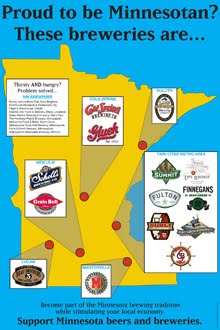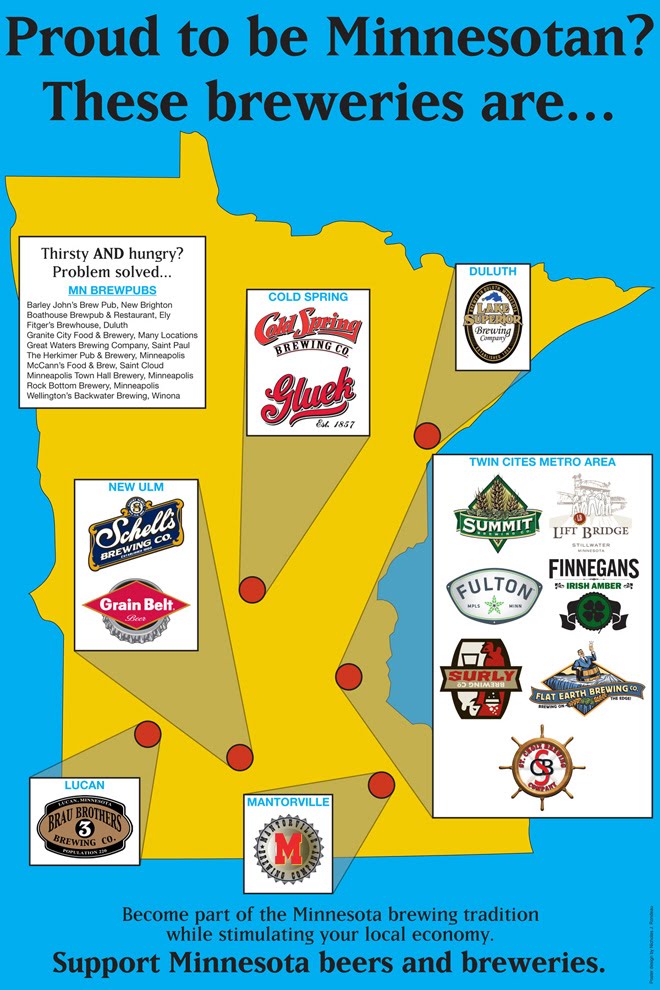When you go to most bars and order a "tap" or "draft" beer, you're getting a "pushed" beer. A pushed beer is usually contained in a keg and is dispensed from the tap using a pressurized tank of CO2 or occasionally, nitrogen. The kegs come in different sizes, the most common of which are: 1/2 barrel, 1/4 barrel, and 1/6 barrel. These are sealed containers that keep the beer fresh. Each keg has an inlet and outlet valve. The bar has to connect a coupler to the keg, which allows the pressurized gas into the keg and pushes the beer out to the tap. The keg is in a cooler, which typically keeps the beer very cold. The tap handle is just a switch for opening and closing a valve that controls the flow of beer at the spigot. This is the way most people are accustomed to getting draft beer at a bar.
Cask ale, sometimes called "real ale," is a lesser-known way to serve a beer at a bar. That's unfortunate, because I prefer cask ales. A cask ale is packaged in a cask, not a keg. The beer that is put into a cask traditionally goes through a secondary fermentation in the container. The beer has not been pasteurized or filtered, so there is still residual living yeast in the liquid. When this "living" beer is put into the cask it is allowed to do it's work and generate carbon dioxide naturally. This is called conditioning and it's the natural way to get bubbles in your beer.
Casks can come in a number of sizes, but a "firkin" is the most common. A cask has an outlet tap for the beer, but it also has some sort of vent which allows air in to equalize the pressure when the beer leaves. Air will shorten the life of any beer, so the shelf life of a tapped cask can be very short. There are a few different ways to serve true cask ales. All of them involve laying the cask on it's side, unlike upright kegs.
- Gravity dispense - This one is pretty straight forward. The tap is just an open/close valve. Gravity does all the work as long as the tap is lower than the beer level.
- Tall fount - This method is used in Scotland. Air pressure created by an electric compressor is used to move the beer to the faucet.
- Beer engine - A beer engine looks similar to the faucets used for pushed beers. However, the handles have a long motion and are actually manually operated pumps. The pump draws the beer from the cask and dispenses it through the faucet. (This method is fun to watch.)
- Electric pump - Sometimes they look like a standard tap, sometimes they look like a beer engine. All that matters is the beer is moved by a motorized electric pump, rather than a manual pump. The handle is the on/off switch.
I love cask ales. However, just to note, we still need pushed beer. Pushed beer has a much longer shelf life, which is important to the bar and the consumers. Also, there is a reason it's called cask ale. Lagers typically need to be stored and served at cooler temperatures, and they are not served out of casks.
If you've never tried a true cask ale, I highly recommend it. Don't be scared off by the people who say it is warm and flat. It's not flat, it's naturally conditioned. It's not warm, it's just not ice cold. It has a great mouthfeel and delicious flavor. My favorite place to have a beer (besides home) is Great Waters Brewing Company in Saint Paul. They brew their own tasty cask ales and pushed beers. I'm sure there are other places in the Twin Cities area with cask ales, but I'm not sure where. Let me know in the comments.








No comments:
Post a Comment